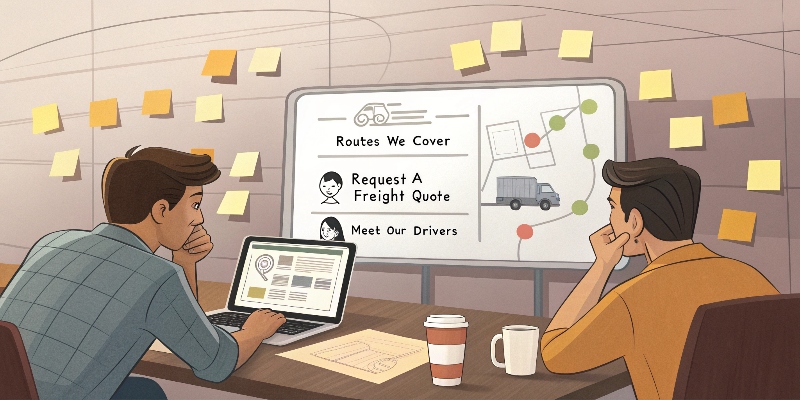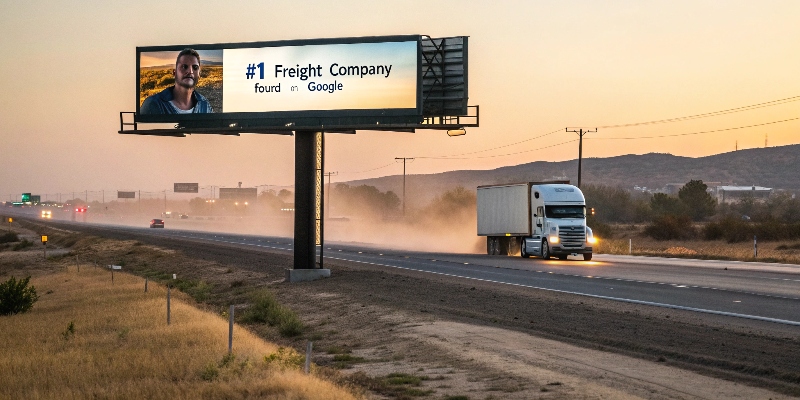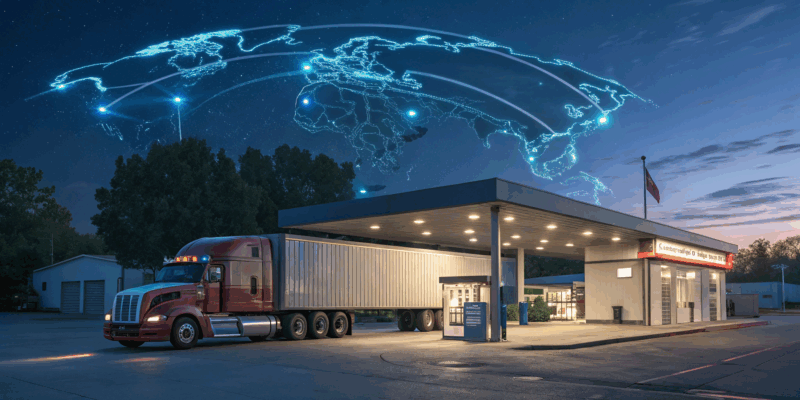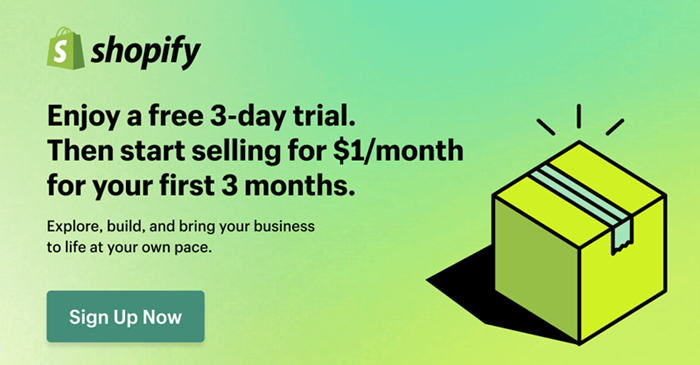My content is reader-supported by awesome people like you. Which means I could earn a commission. Learn more here!
Your trucking company runs like clockwork on the highway.
But when customers search online for freight services, they can’t find you anywhere.
That’s a problem.
Most shippers today check out your website before they even think about picking up the phone.
Without an online presence, you’re losing potential clients to competitors who show up first in Google searches.
Here’s what you’ll learn: exactly how to build a professional trucking website that attracts new customers and makes booking easier for existing ones.
We’ll walk through every step using beginner-friendly tools that won’t break the bank.
Why Every Trucking Business Needs a Website
The trucking industry has changed. Customers expect to find you online, get instant quotes, and book services without playing phone tag.
Here’s what happens when you don’t have a website:
- Potential customers can’t verify that your business is legitimate
- You miss out on local Google searches for freight services
- Competitors with websites get the jobs you could have landed
- You spend more time answering basic questions instead of driving
Statistics show that 75% of people judge a company’s credibility based on website design.
Without one, you’re starting behind the competition.
Your website works 24/7, collecting leads while you’re on the road.
It answers common questions, shows your fleet, and lets customers request quotes anytime.
Pre-Planning: What You Need Before You Start
Don’t jump straight into building. Gather these items first to make the process smoother:
Business Information:
- Company name and logo (even a simple text logo works)
- Your services (local delivery, long-haul, hazmat, refrigerated)
- Service areas and routes you cover
- Contact information and physical address
Visual Content:
- Photos of your trucks and trailers
- Pictures of your team or the dispatch office
- Any certifications or safety awards
Domain Ideas: Think about domain names like [yourcity]trucking.com or [yourname]logistics.com. Keep it simple and easy to remember.
Getting this ready upfront saves hours of back-and-forth later.
Step-by-Step: How to Build a Trucking Website

Choose a Website Builder
You don’t need coding skills to build a professional site.
These platforms handle the technical stuff while you focus on content.
| Website Builder | Best For | Ease of Use | Monthly Cost | Key Features |
|---|---|---|---|---|
| Squarespace | Clean design, booking forms | ⭐⭐⭐⭐⭐ | $16-$40 | Great templates, mobile-ready |
| Wix | Visual editing, customization | ⭐⭐⭐⭐⭐ | $14-$39 | Drag-and-drop, lots of apps |
| WordPress | Blogging, advanced features | ⭐⭐⭐ | $4-$45 | Most flexible, learning curve |
| Hostinger | Budget-friendly option | ⭐⭐⭐⭐⭐ | $3-$9 | Good starter plans, decent templates |
| Webflow | Professional control | ⭐⭐⭐ | $12-$36 | Advanced design, steeper learning |
My recommendation: Start with Squarespace if you want something that looks professional right away. The templates work well for service businesses, and the booking forms are perfect for quote requests.
Wix is great if you like more control over design. The editor lets you move things around exactly where you want them.
WordPress gives you the most options but takes longer to learn. Consider it if you plan to blog regularly about industry topics.
Get a Domain Name and Hosting
Your domain is your web address. Make it memorable and related to your business.
Good examples:
- michiganfreight.com
- bluelinetrucking.com
- quickhaullogistics.com
Avoid numbers and hyphens if possible.
They’re harder to remember and spell out over the phone.
Most website builders include hosting, so you don’t need to worry about technical server stuff. Just connect your domain and you’re set.
Pick the Right Template
Look for templates designed for logistics, transportation, or service businesses.
Avoid overly fancy designs that load slowly on mobile phones.
Key features to check:
- Mobile-responsive design (looks good on phones)
- Fast loading speed
- Contact forms included
- Gallery sections for fleet photos
When testing templates, view them on your phone. Most of your customers will visit from mobile devices.
Note: Keep in mind, too, when you use Squarespace, you can pick a template or use their Blueprint AI to build it out too.
Add Your Core Pages
Every trucking website needs these essential pages:
Homepage: Keep it simple. Visitors should understand what you do within 10 seconds. Include your main service area, types of freight you handle, and a clear “Get Quote” button.
Services Page: Break down what you offer:
- Local delivery and pickup
- Long-haul transportation
- Specialized freight (hazmat, oversized, refrigerated)
- Express or rush services
About Us: Tell your story. How long have you been in business? What makes you different? Include photos of your team and fleet.
Get a Quote Page: This is where you make money. Create a simple form asking for:
- Pickup location and zip code
- Delivery location and zip code
- Type and weight of freight
- Preferred timeline
- Contact information
Fleet Gallery: Show off your trucks and equipment. Clean, well-maintained vehicles build trust with potential customers.
Contact Page: Include phone number, email, physical address, and business hours. Add a Google Map showing your location.
Set Up Quote Request Forms
This is where many trucking websites fail. Your quote form should be easy to find and simple to fill out.
Use dropdown menus for common options:
- Freight type (palletized, loose, hazmat, etc.)
- Equipment needed (dry van, flatbed, reefer)
- Urgency (standard, expedited, ASAP)
Keep required fields to a minimum. You can always call for more details once they submit the basic request.
Consider adding a phone number field with automatic formatting. It makes following up much easier.
Pro tip: Set up automatic email notifications so you respond to quotes within an hour. Speed matters in this business.
SEO for Trucking Websites

Getting found in Google searches can make or break your online success.
Focus on local SEO since most trucking jobs come from nearby businesses.
Target Local Keywords:
- “freight company near me”
- “trucking services [your city]”
- “[your state] logistics company”
- “local delivery service [area]”
Optimize Your Pages: Add your city and state to page titles and descriptions. Write naturally – don’t stuff keywords where they don’t belong.
Use alt text for truck photos. Instead of “IMG_001.jpg,” write “blue semi truck parked at Detroit loading dock.”
Create Location Pages: If you serve multiple cities, make separate pages for each area. Include specific information about routes, local regulations, or warehouse partnerships.
Set Up Google Business Profile: This free listing shows your business in Google Maps searches. Include photos, hours, services, and encourage customer reviews.
Submit Your Sitemap: Use Google Search Console to tell Google about your website pages. It helps them find and index your content faster.
Features That Make You Stand Out
Basic websites are everywhere. These extras help you compete with larger companies:
Live Chat: Tools like Tawk.to or HubSpot let customers ask questions instantly. You can answer while driving (safely) or set up automated responses for common questions.
Customer Testimonials: Display reviews from repeat customers. Include company names if possible – B2B clients trust peer recommendations.
Driver Application Forms: Always hiring? Add an online application that feeds directly to your email or Google Sheets. It’s easier than handling paper forms.
Load Board Integration: Some advanced builders let you embed live load information or tracking updates. Great for transparency with existing customers.
Compliance Badges: Display DOT numbers, safety ratings, and certifications prominently. They build immediate trust with shippers who need reliable carriers.
Examples of Great Trucking Websites
Let me break down what works on successful trucking sites:
Clear Value Proposition: The best sites immediately tell you what they do and where they operate. No guessing games.
Easy Contact Options: Phone numbers are large and clickable. Quote forms are prominent and simple.
Professional Photos: High-quality images of clean trucks and organized facilities. Avoid grainy phone photos if possible.
Fast Loading: Pages load in under 3 seconds, even on mobile connections. Slow sites lose customers fast.
Local Focus: They mention specific routes, cities, and regional expertise. Generic “nationwide service” claims don’t convert as well.
Keeping Your Website Running Smooth
Building the site is just the start. Regular maintenance keeps it working and ranking well.
Monthly Tasks:
- Update contact information if anything changes
- Add new fleet photos when you get different equipment
- Check that all forms are working properly
- Review and respond to any new customer reviews
Security Basics: Most website builders handle security automatically, but check that your site has an SSL certificate (the little lock icon in browsers).
Speed Testing: Use Google PageSpeed Insights monthly to check loading times. Compress large photos if they’re slowing things down.
Backup Your Content: Save copies of your photos and content regularly. Website builders rarely lose data, but it’s smart to be prepared.
Your Website Is Your Digital Business Card
Think of your website as the digital version of your truck’s exterior. It needs to look professional, clearly show what you do, and make people want to work with you.
You don’t need a perfect site on day one. Start with the basics and improve over time. The important thing is getting online so customers can find you.
Remember, every day without a website is potential business going to competitors who show up in Google searches.
Frequently Asked Questions
What should I include on a trucking company website?
Your website needs basic pages like services, about us, contact information, and a quote request form. Include photos of your fleet and any special certifications you have.
How much does it cost to build a trucking website?
Website builders typically cost $15-40 per month, plus $10-15 annually for a domain name. Total first-year cost is usually under $500 for a professional site.
Can I build a trucking website myself without coding?
Yes, modern website builders like Squarespace and Wix use drag-and-drop editors. No coding knowledge required, though some technical comfort helps.
Which website builder works best for trucking companies?
Squarespace offers the cleanest designs and best booking forms for service businesses. Wix provides more customization options if you want specific layouts.
How do I get trucking customers to find my website?
Focus on local SEO by including your city and service areas in page content. Set up Google Business Profile and encourage customer reviews.
What makes a trucking website convert visitors into customers?
Clear contact information, simple quote request forms, professional fleet photos, and fast loading speeds. Make it easy for customers to reach you.
Do I need separate pages for different trucking services?
Yes, create individual pages for specialized services like hazmat, refrigerated, or oversized loads. It helps with search rankings and customer clarity.
How often should I update my trucking website content?
Update contact information immediately when it changes. Add new fleet photos quarterly and check that quote forms work monthly.
Can I accept online payments through my trucking website?
Most website builders support payment processing, but trucking typically involves complex pricing and terms better handled through direct contact and invoicing.
What legal information should appear on my trucking website?
Include your DOT number, MC number if applicable, business address, and any required state licensing information. Check local regulations for specific requirements.
How do I make my trucking website mobile-friendly?
Choose responsive templates that automatically adjust to phone screens. Test your site on different devices and keep text large enough to read easily.
Should I include driver employment information on my website?
Yes, a careers page with online applications can help recruit drivers. Include job requirements, benefits, and contact information for your hiring manager.
How long does it take to build a trucking website?
With a website builder, you can have a basic site running in a weekend. Plan 2-4 weeks to gather content, customize design, and test everything properly.






Leave a Reply